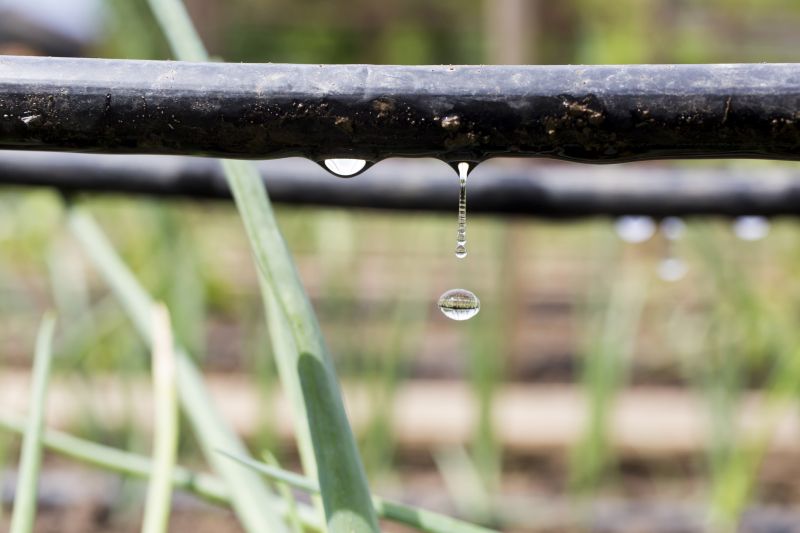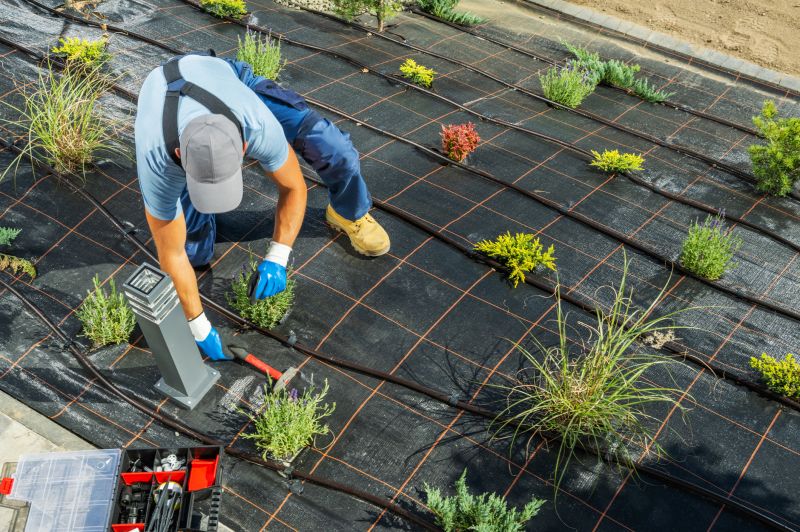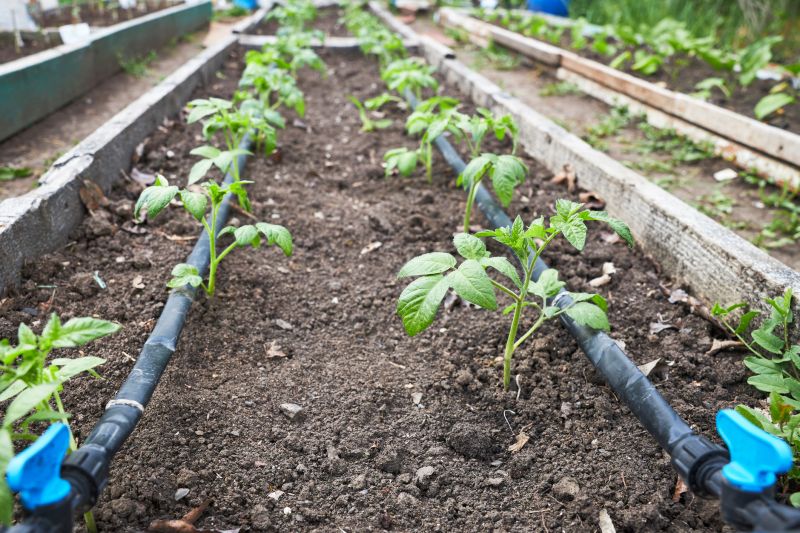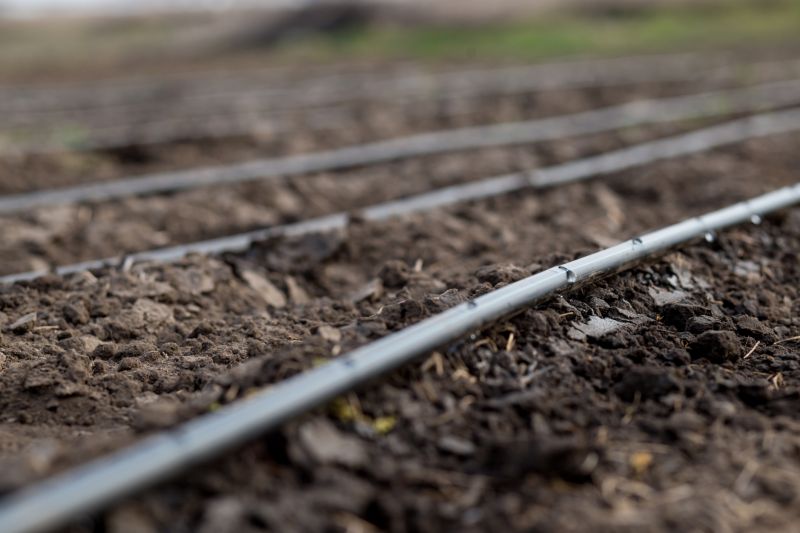Get Drip Irrigation Installation in Cincinnati, OH
Property owners in Cincinnati, OH, can find local contractors who install drip irrigation systems to efficiently water gardens, flower beds, and vegetable patches, solving overwatering and uneven watering problems.
If you're considering a drip irrigation system for your Cincinnati property, you're in the right place to explore your options. Installing this efficient watering method can help ensure your plants and garden beds receive consistent moisture while reducing water waste. Property owners often turn to local contractors for guidance on planning and installing systems that suit their landscape’s unique needs, whether for a residential yard or a commercial property.
Comparing local service providers can help you find the right fit for your project. Many Cincinnati-area contractors specialize in drip irrigation installation, offering practical solutions that enhance water management and landscape health. Continuing to explore your options can provide valuable insights into the best approaches for your property, making it easier to move forward with a plan tailored to your specific gardening or landscaping goals.
- New Garden Installations - when establishing a new landscape or vegetable garden that requires efficient watering.
- Existing Irrigation System Upgrades - for homeowners needing to replace or improve outdated or inefficient drip systems.
- Water Conservation Projects - in neighborhoods like Hyde Park or Oakley where reducing water use is a priority.
- Landscape Renovations - during yard redesigns in areas such as Clifton or Mount Adams that involve extensive planting.
- Property Maintenance for Commercial Landscapes - when maintaining lush, healthy greenery on business or community properties in Cincinnati.



Drip irrigation installation involves setting up a specialized watering system that delivers water directly to the roots of plants through a network of tubing, emitters, and valves. This method provides a consistent and efficient way to keep gardens, flower beds, and landscaped areas properly hydrated without the need for manual watering or traditional sprinkler systems. Professional service providers assess the property’s layout, select appropriate equipment, and install the system to ensure even coverage and reliable operation. This approach is particularly beneficial for maintaining healthy plants while reducing water waste and minimizing the time spent on manual watering tasks.
Many common problems faced by homeowners can be addressed with drip irrigation systems. Overwatering can lead to root rot and plant disease, while underwatering causes plants to wilt and die. Traditional sprinklers often waste water due to overspray or evaporation, especially during windy conditions. Drip systems help solve these issues by delivering water slowly and directly to each plant, reducing runoff and evaporation. Additionally, they are ideal for uneven terrain or garden beds with delicate plants that require targeted watering, making it easier to maintain healthy landscaping with less effort and water consumption.
Properties that typically benefit from drip irrigation include residential yards, vegetable gardens, flower beds, and landscape areas with diverse plantings. Homes with irregularly shaped gardens or sloped terrain often find drip systems particularly effective, as they can be customized to fit unique layouts. Commercial properties, such as community gardens or outdoor retail spaces, also use drip irrigation to ensure consistent watering across large or complex landscapes. This system is especially useful in areas where water conservation is a priority or where traditional sprinkler systems may be impractical or inefficient.
If considering a drip irrigation system, it’s important to work with experienced local contractors who can design and install a solution tailored to the specific needs of the property. These professionals evaluate the landscape, recommend appropriate components, and ensure the system functions properly for long-term use. Proper installation can help prevent common issues like clogged emitters or uneven watering, providing a reliable way to keep outdoor spaces vibrant and healthy. Contacting local service providers can help identify the best options for any property, whether it’s a small garden or a large landscaped yard.
The overview below groups typical Drip Irrigation Installation projects into broad ranges so you can see how smaller, mid-sized, and larger jobs often compare in Cincinnati, OH.
In many markets, a large share of routine jobs stays in the lower and middle ranges, while only a smaller percentage of projects moves into the highest bands when the work is more complex or site conditions are harder than average.
Smaller Repairs - Typical costs for minor drip irrigation repairs or adjustments in Cincinnati range from $150 to $400. Many routine maintenance jobs fall within this range, depending on the scope of work and system complexity.
Basic Installation - Installing a standard drip irrigation system for a small to medium-sized garden usually costs between $600 and $1,200. Local contractors often complete these projects within this range, though larger yards may cost more.
Full System Replacement - Replacing an entire existing drip irrigation setup can cost between $1,500 and $3,000 for most residential properties. Larger or more intricate landscapes may push costs higher, especially if additional features are included.
Large or Complex Projects - Extensive irrigation installations for larger properties or custom designs can exceed $5,000. While fewer projects reach this level, they typically involve advanced systems or extensive landscaping work that increases the overall cost.
Actual totals will depend on details like access to the work area, the scope of the project, and the materials selected, so use these as general starting points rather than exact figures.
Sprinkler System Installation - local contractors often use similar planning and underground piping skills to install efficient watering systems for lawns and gardens.
Landscape Irrigation Design - designing irrigation layouts requires knowledge of water distribution and planning, which is essential for successful drip irrigation setups.
Garden Bed Drip Line Setup - installing drip lines in garden beds involves similar tools and techniques used to lay out and connect irrigation components.
Soil Moisture Sensor Installation - integrating moisture sensors with irrigation systems requires understanding of water flow and system control, related to drip irrigation management.
Water Line Repair and Replacement - fixing or replacing underground water lines shares skills in piping, trenching, and system troubleshooting with drip irrigation projects.
Hose and Faucet Installation - setting up hoses and outdoor faucets involves plumbing skills that complement the installation of drip irrigation components.

When evaluating contractors for drip irrigation installation, it’s important to consider their experience with similar projects in the Cincinnati area. Homeowners should look for service providers who have a proven track record of installing drip systems in residential landscapes comparable to their own. Asking about past work can help determine whether a contractor has the necessary expertise to handle the specific challenges of your yard, such as soil type, plant types, and existing irrigation infrastructure. An experienced local contractor will be familiar with common site conditions and best practices, which can contribute to a more successful and efficient installation.
Clear written expectations are key to ensuring a smooth project process. Homeowners should seek service providers who can provide detailed descriptions of the work involved, including the scope of the installation, materials used, and any preparation or follow-up steps. Having this information in writing helps prevent misunderstandings and sets a foundation for a transparent working relationship. It’s also beneficial to discuss how the contractor plans to coordinate the work, what the installation will entail, and how any potential issues will be addressed, so expectations are aligned from the start.
Reputable references and effective communication are essential factors when comparing local contractors. Homeowners are encouraged to ask for references from previous clients with similar projects and to follow up with those references to learn about their experiences. Good communication is also a sign of a professional service provider; responsive, clear, and timely exchanges can make the process easier and more predictable. While the site introduces homeowners to local options, it’s important to evaluate each contractor’s reputation and communication style to find a provider capable of delivering quality results and a positive project experience.
Property owners in Cincinnati, OH use Drip Irrigation Installation services for practical projects around their homes and businesses. This guide focuses on everyday jobs and straightforward project options.


Homeowners in Cincinnati, OH, often seek drip irrigation installation services to help maintain healthy lawns and gardens with less effort. This approach can be especially useful during hot summer months when traditional sprinklers may waste water or fail to reach all areas evenly. Property owners looking for a simple, efficient way to keep flower beds, vegetable gardens, or landscaped yards properly watered might turn to local contractors who specialize in drip irrigation systems.
Additionally, those managing larger properties or outdoor spaces may consider drip irrigation to reduce water usage and minimize maintenance. Local service providers can assess the specific needs of a property, whether it’s a residential backyard or a commercial landscape, and recommend appropriate installation solutions. Connecting with experienced contractors ensures that the system is set up correctly to provide reliable, consistent watering tailored to Cincinnati’s climate and property features.
What is drip irrigation installation? Drip irrigation installation involves setting up a system that delivers water directly to plants’ roots through a network of tubes and emitters, helping to conserve water and improve plant health.
How do local contractors typically install drip irrigation systems? Local contractors assess the landscape, plan the layout, and install tubing, emitters, and controls to ensure efficient watering tailored to the specific garden or lawn.
Can drip irrigation be integrated with existing sprinkler systems? Yes, many service providers can connect drip irrigation to existing sprinkler setups or create a standalone system based on the landscape’s watering needs.
What types of properties benefit most from drip irrigation installation? Properties with flower beds, vegetable gardens, or landscaped areas that require precise watering are ideal for drip irrigation systems.
What maintenance is involved after a drip irrigation system is installed? Maintenance typically includes checking for clogs, inspecting emitters, and ensuring the system is functioning properly to provide consistent watering.
Efficient Garden Watering - Property owners can install drip irrigation to ensure plants and flower beds receive consistent, targeted watering, reducing water waste.
Vegetable Garden Care - Homeowners with vegetable patches can use drip systems to keep soil moist and promote healthy growth without overwatering.
Lawn and Landscape Maintenance - Property managers can implement drip irrigation to maintain lush lawns and landscaped areas with minimal effort.
Water Conservation in Hard-to-Reach Areas - Drip irrigation helps water difficult spots like narrow garden beds or slopes effectively, saving time and resources.

If you are thinking about Drip Irrigation Installation for a property in Cincinnati, OH, this guide is meant to help you understand the work, the typical project types, and how different options might fit your plans.
When you are ready, you can use the quote form on this page to share a few details about your project. From there, local pros can review the basics and respond with options that match what you have in mind.
